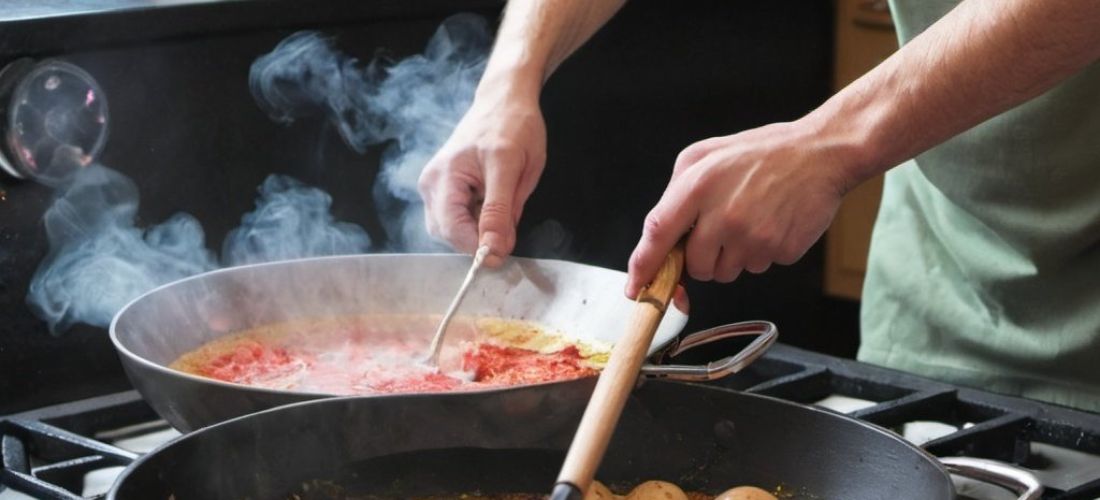Creating your own organic homemade cat food is a rewarding way to ensure your feline friend receives the best possible nutrition. This guide will walk you through the benefits of homemade cat food, the necessary preparations, and several easy-to-follow recipes. By the end, you’ll have the knowledge to make healthy, organic meals for your cat that meet VAT (Veterinary Approved and Tested) standards.
Why Is Homemade Cat Food Essential for Cats?
The Importance of Natural Ingredients
Unfortunately, many commercial cat foods contain fillers, preservatives, and low-quality ingredients that can be harmful to your cat’s health. By making homemade cat food, you have full control over the ingredients, ensuring your cat consumes only high-quality, organic food. This reduces the risk of allergies and digestive issues while promoting overall well-being.
Understanding Cat Nutritional Needs
A balanced diet for cats must include essential nutrients like protein, taurine, vitamins, and minerals. Commercial cat food often lacks the necessary nutrients or uses synthetic additives to replace them. With homemade cat food, you can create meals tailored to your cat’s specific nutritional needs. It’s important to consult with a veterinarian to ensure your recipes meet these requirements, especially if your cat has special dietary needs.
Benefits of Homemade Cat Food
Health Advantages
Homemade cat food can lead to numerous health benefits. When you control what your cat eats, you can eliminate harmful chemicals and preservatives, reducing the risk of chronic health issues like obesity, diabetes, and kidney disease. Additionally, homemade cat food can be easier to digest, leading to better gut health and a shinier coat.
Control Over Ingredients
One of the biggest advantages of making homemade cat food is the ability to select each ingredient. You can choose organic, human-grade meats, and fresh vegetables, avoiding artificial colors, flavors, and other unwanted additives. This control allows you to customize your cat’s diet based on their preferences and health needs.
Cost-Effectiveness
While organic ingredients might seem more expensive upfront, making homemade cat food can be cost-effective in the long run. You can buy ingredients in bulk, reduce waste by using leftovers, and avoid costly veterinary bills by maintaining your cat’s health through proper nutrition.
Which Food Is Best: Homemade, Cooked Or Commercial?
Pros and Cons of Homemade Cat Food
Pros:
- High-Quality Ingredients: You can select the best organic ingredients.
- Tailored Nutrition: Customizable to meet your cat’s specific needs.
- No Fillers: No unnecessary additives or fillers.
Cons:
- Time-Consuming: Preparing meals takes more time than opening a can of commercial food.
- Requires Knowledge: You must understand feline nutrition to create balanced meals.
Comparing Cooked and Raw Diets
Cooked Diets: Cooking cat food can help kill harmful bacteria and make certain ingredients easier to digest. It’s especially beneficial for cats with sensitive stomachs. However, cooking can destroy some nutrients, so it’s essential to add supplements to maintain a balanced diet.
Raw Diets: Raw food diets aim to mimic what cats would eat in the wild, providing a more natural source of nutrients. While raw diets can be beneficial, they carry a risk of contamination by pathogens like Salmonella. It’s crucial to handle raw ingredients carefully and consult a vet to ensure your cat receives all necessary nutrients.
Evaluating Commercial Cat Food Options
Commercial cat food can be convenient, but it often contains lower-quality ingredients and artificial additives. Some high-quality brands offer organic or natural options, but these are typically more expensive. If you opt for commercial food, look for products with whole, named meat sources as the first ingredient, minimal fillers, and no artificial preservatives.
Things You Need to Know Before Making Cat Food at Home
Nutritional Balance and Supplements
Cats require a delicate balance of nutrients, including taurine, which is essential for heart and eye health. While homemade food allows for customization, it can be challenging to ensure your cat gets all the necessary nutrients. Consider adding supplements, such as fish oil for omega-3 fatty acids, and consult with a veterinarian to avoid deficiencies.
Safe Food Preparation and Storage
When preparing homemade cat food, cleanliness is paramount. Always wash your hands and utensils thoroughly to prevent cross-contamination. Store prepared food in airtight containers in the refrigerator for up to three days or freeze it for longer storage. Label containers with the date to keep track of freshness.
Consulting with a Veterinarian
Before transitioning your cat to a homemade diet, consult with a veterinarian. They can provide guidance on your cat’s specific dietary needs, recommend supplements, and help you create a balanced meal plan. Regular check-ups are also essential to monitor your cat’s health and adjust their diet as needed.
How to Make Cat Food at Home?
Step-by-Step Guide to Preparing Homemade Cat Food
- Choose High-Quality Ingredients: Start with fresh, organic meats like chicken, turkey, or fish. Add small amounts of vegetables like carrots or peas for fiber and vitamins.
- Cook or Prepare Raw: Depending on your preference, you can cook the ingredients or prepare them raw. For cooked food, boil or bake the meat without adding salt or spices.
- Mix and Store: Combine the meat with vegetables and any necessary supplements (e.g., taurine, fish oil). Mix well and store in portion-sized containers.
- Serve: When serving, bring the food to room temperature and ensure it’s fresh.
Tips for Selecting Quality Organic Ingredients
When shopping for ingredients, look for organic, hormone-free meats. Choose vegetables that are free from pesticides, and if possible, use locally sourced produce to support sustainable farming practices. Remember, what’s healthy for you may not be suitable for your cat, so research each ingredient carefully.
Cat Food Recipes
Homemade Wet Cat Food Recipes
Easy Chicken Recipe
Ingredients:
- 1 pound of organic chicken breast
- 1/4 cup of organic carrots, finely chopped
- 1/4 cup of organic peas
- 1/2 teaspoon of fish oil
- 500 mg taurine supplement
Instructions:
- Boil the chicken until fully cooked.
- Finely chop or shred the chicken.
- Steam the carrots and peas until soft.
- Mix the chicken, vegetables, fish oil, and taurine together.
- Serve at room temperature.
Simple Tuna Recipe
Ingredients:
- 1 can of organic, water-packed tuna
- 1/4 cup of organic pumpkin puree
- 1 teaspoon of fish oil
- 500 mg taurine supplement
Instructions:
- Drain the tuna and mix it with pumpkin puree.
- Add fish oil and taurine, mixing thoroughly.
- Serve immediately or store in the fridge.
Homemade Dry Cat Food Recipes
Crunchy Salmon Recipe
Ingredients:
- 1 pound of organic salmon filet
- 1/2 cup of brown rice flour
- 1 egg
- 1 teaspoon of fish oil
- 500 mg taurine supplement
Instructions:
- Preheat your oven to 350°F (175°C).
- Cook the salmon thoroughly and then blend it with the egg and fish oil.
- Mix in the brown rice flour and taurine.
- Roll the mixture into small balls and flatten them.
- Bake for 20-25 minutes until crispy.
Grain-Free Turkey Recipe
Ingredients:
- 1 pound of organic turkey breast
- 1/2 cup of ground flaxseed
- 1 egg
- 1 teaspoon of fish oil
- 500 mg taurine supplement
Instructions:
- Preheat your oven to 350°F (175°C).
- Cook the turkey and blend it with the egg and fish oil.
- Mix in the ground flaxseed and taurine.
- Roll the mixture into small balls and flatten them.
- Bake for 20-25 minutes until crispy.
FAQs
How can I make my own cat food at home?
Start by selecting high-quality organic ingredients, such as chicken, turkey, or fish. Combine these with vegetables and necessary supplements, like taurine. You can either cook the food or prepare it raw, depending on your cat’s preference and nutritional needs.
Which homemade food is good for cats?
Good homemade cat food should be meat-based, with small amounts of vegetables for fiber. Chicken, turkey, and fish are excellent protein sources. Ensure the food is balanced with necessary supplements.
How do I feed my cat organically?
Feeding your cat organically involves using organic meats and vegetables free from pesticides, hormones, and antibiotics. You can prepare homemade cat food or choose certified organic commercial cat food.
What should the first 3 ingredients in cat food be?
The first three ingredients should ideally be high-quality protein sources, such as chicken, turkey, or fish. Avoid foods with fillers like corn or soy listed as primary ingredients.
Is homemade food healthier for cats?
Homemade cat food can be healthier if it’s well-balanced and made with high-quality ingredients

